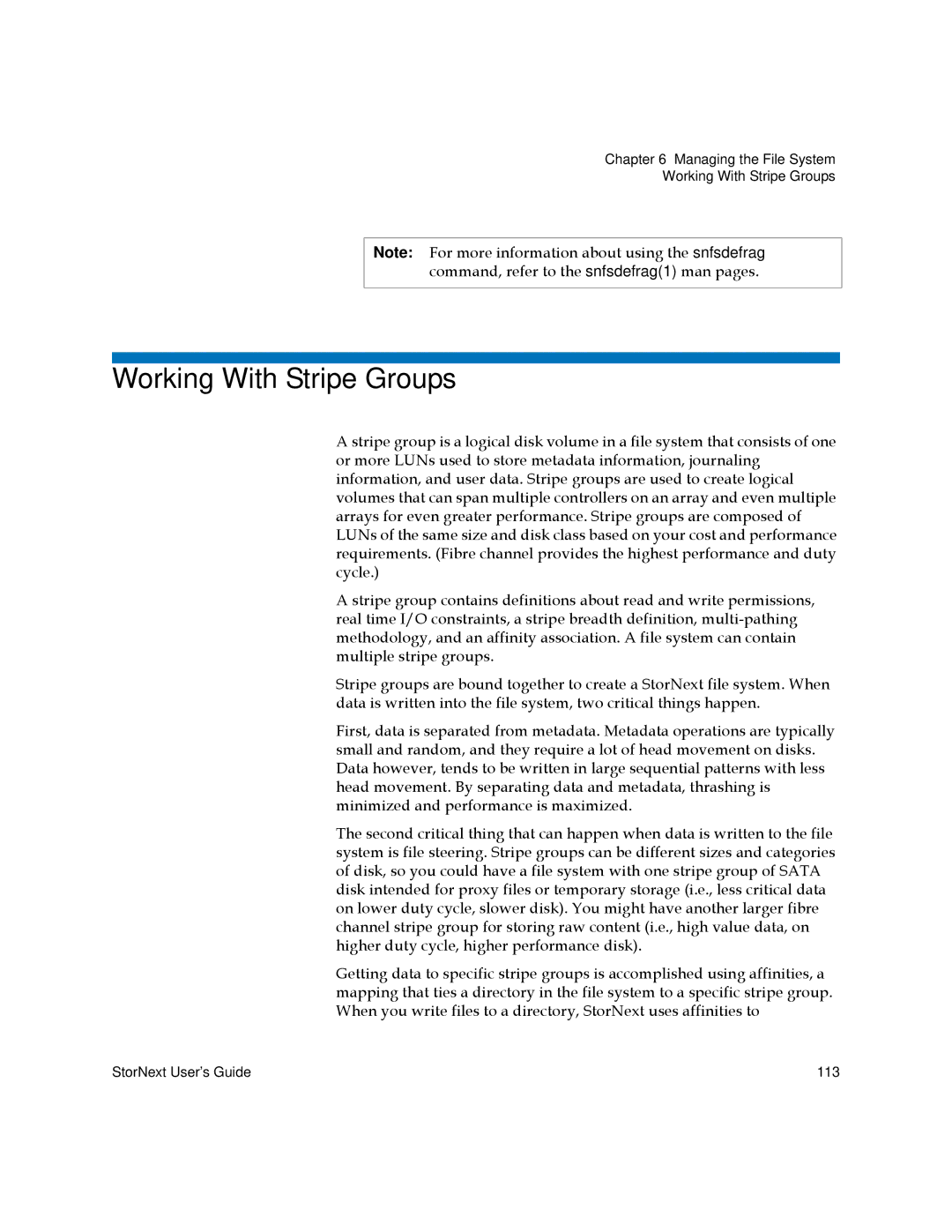
Chapter 6 Managing the File System
Working With Stripe Groups
Note: For more information about using the snfsdefrag command, refer to the snfsdefrag(1) man pages.
Working With Stripe Groups
A stripe group is a logical disk volume in a file system that consists of one or more LUNs used to store metadata information, journaling information, and user data. Stripe groups are used to create logical volumes that can span multiple controllers on an array and even multiple arrays for even greater performance. Stripe groups are composed of LUNs of the same size and disk class based on your cost and performance requirements. (Fibre channel provides the highest performance and duty cycle.)
A stripe group contains definitions about read and write permissions, real time I/O constraints, a stripe breadth definition,
Stripe groups are bound together to create a StorNext file system. When data is written into the file system, two critical things happen.
First, data is separated from metadata. Metadata operations are typically small and random, and they require a lot of head movement on disks. Data however, tends to be written in large sequential patterns with less head movement. By separating data and metadata, thrashing is minimized and performance is maximized.
The second critical thing that can happen when data is written to the file system is file steering. Stripe groups can be different sizes and categories of disk, so you could have a file system with one stripe group of SATA disk intended for proxy files or temporary storage (i.e., less critical data on lower duty cycle, slower disk). You might have another larger fibre channel stripe group for storing raw content (i.e., high value data, on higher duty cycle, higher performance disk).
Getting data to specific stripe groups is accomplished using affinities, a mapping that ties a directory in the file system to a specific stripe group. When you write files to a directory, StorNext uses affinities to
StorNext User’s Guide | 113 |
